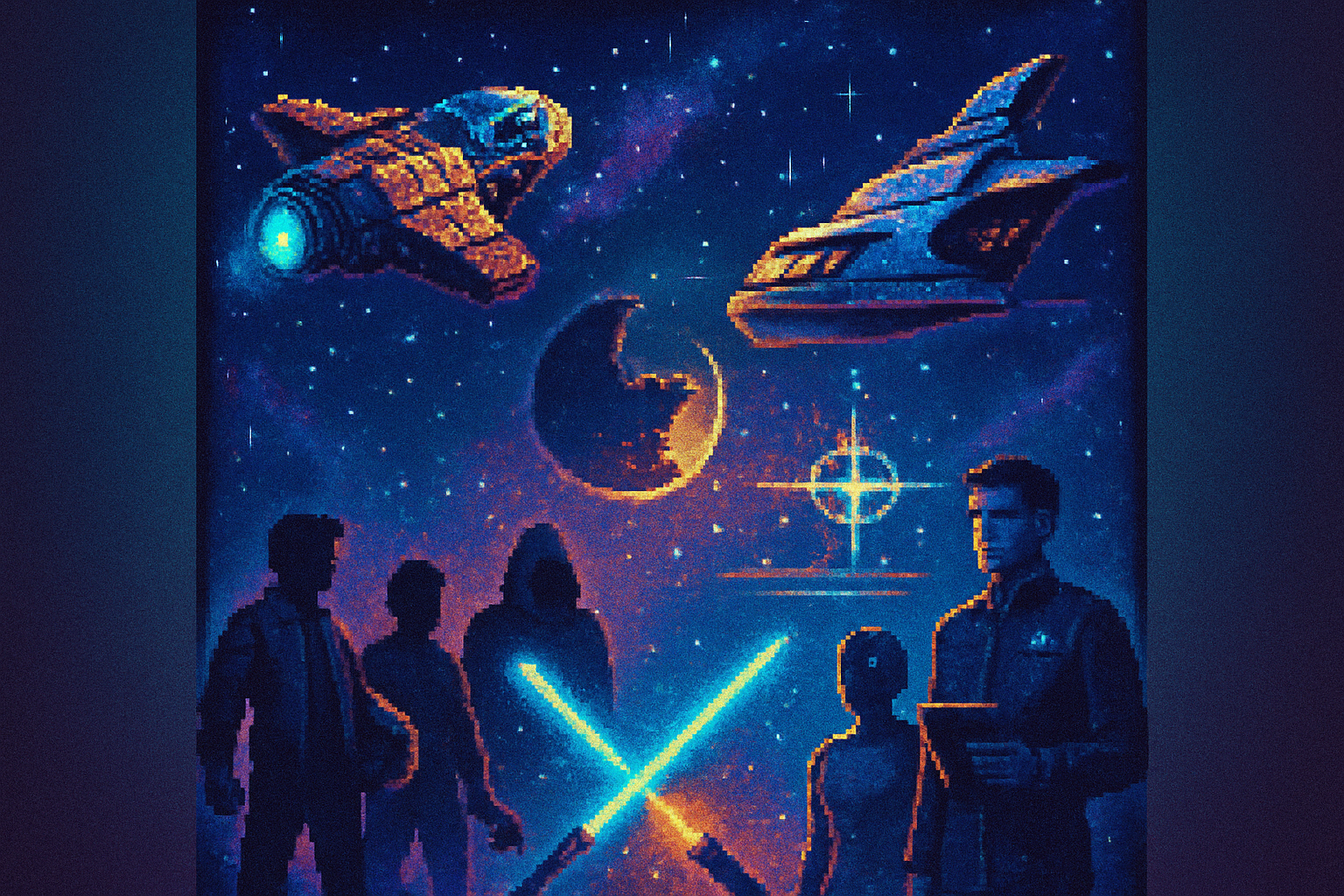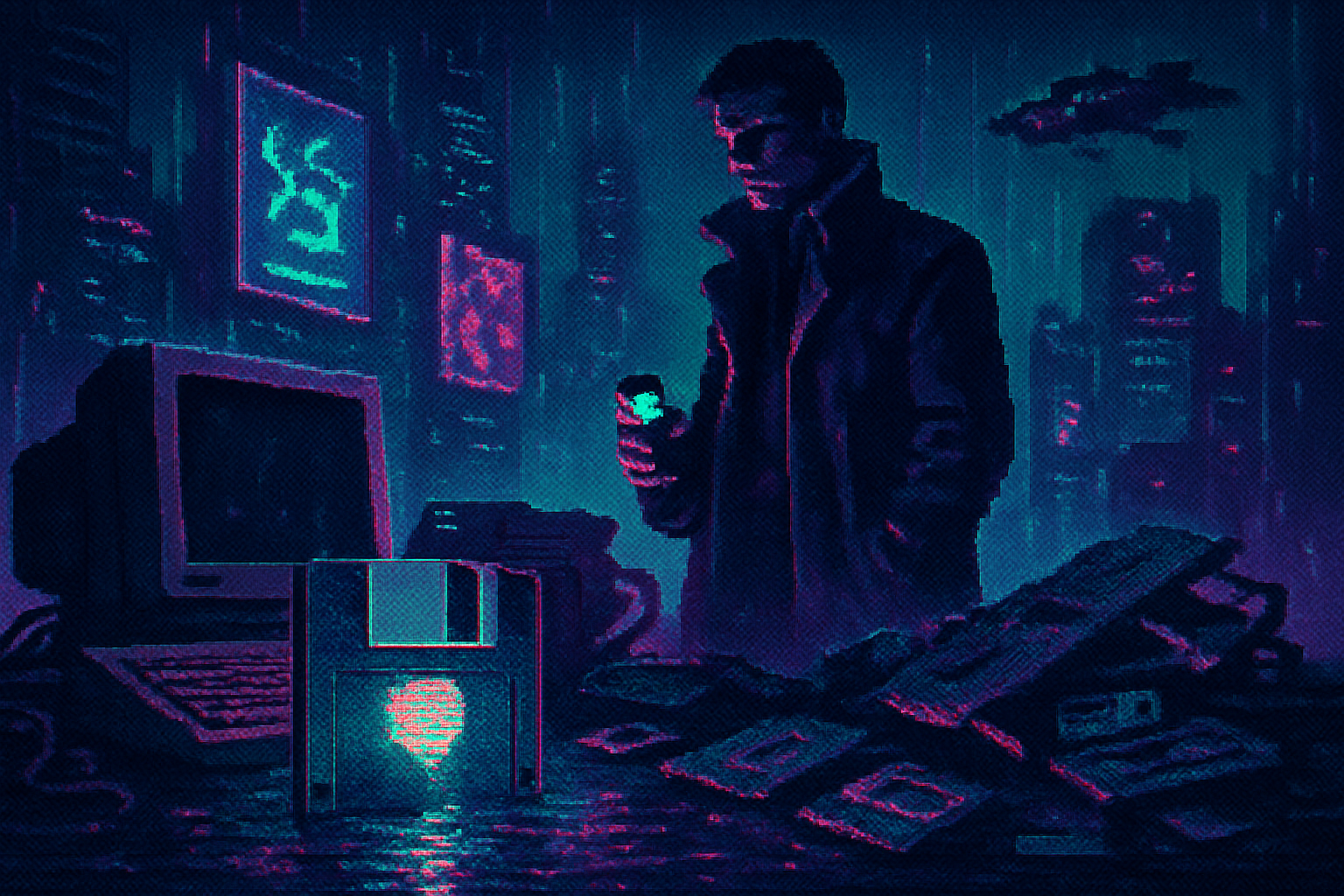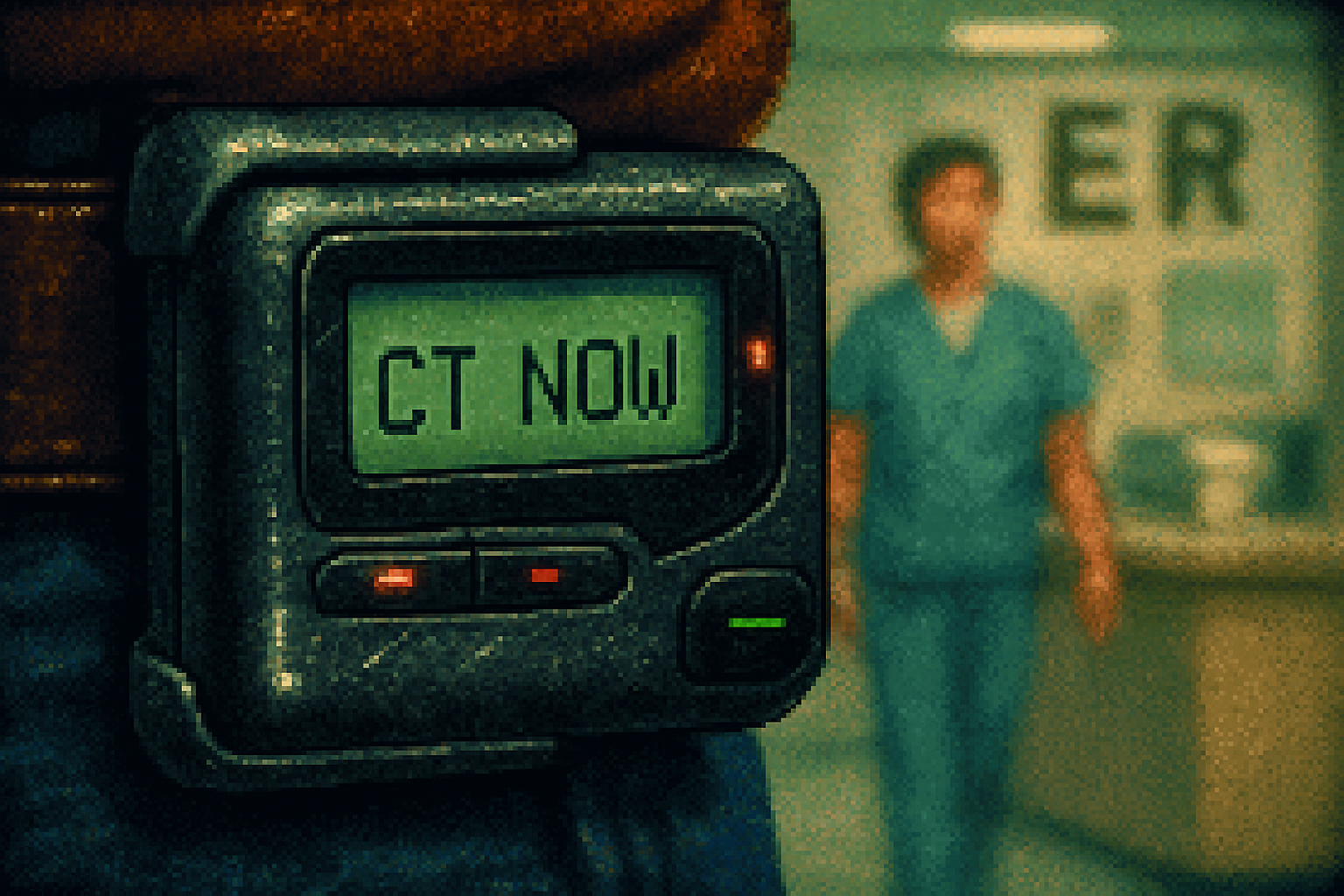· culture · 7 min read
Space Opera Face-Off: Star Wars vs. Star Trek - The Ultimate Showdown
An affectionate, sharp-nosed comparison of Star Wars and Star Trek - why their fans fight, how each shaped the sci‑fi landscape of the 1980s and 1990s, and what the differences tell us about myth, optimism, and the stories we tell about the future.

I remember a summer in 1987 when the playground split in two like a badly written galactic treaty. One side wore black T‑shirts with peeling logos and talked about destiny, lightsabers, and villains who were very good at brooding. The other side favored cardigan‑wearing captains and argued that space is less about destiny and more about policy, diplomacy, and the right way to fill out a mission report.
That childish brawl is actually the distilled truth of two of the most durable properties in modern culture. One is myth in motion, the other is optimism with a clipboard. Here’s their fight - examined without the need for a Nerf‑powered intervention.
Two origin myths: where they came from
Star Wars emerged in the late 1970s as a cinematic myth pumped full of genre staples - westerns, Kurosawa samurai, serials, and Joseph Campbell’s monomyth. George Lucas took mythic scaffolding and shot it through with spectacle and merchandising savvy. See the canonical entry for the film’s cultural arrival in
Star Trek began on television in the 1960s as a hopeful, problem‑solving drama about exploration and ethics - a show that pitched the future as a place where humanists had won the ideological civil war. Its DNA is humanist philosophy, social allegory, and a remarkable faith in institutions (however flawed). Read more in Britannica’s Star Trek article.
The shorthand: Star Wars is mythic hero’s journey mashed with popcorn spectacle. Star Trek is social science fiction and procedural ethics with a powerful case of optimism.
Storytelling techniques: myth vs. modular
Star Wars tells sweeping, emotional arcs. Its structure is cinematic and operatic: big gestures, archetypes, and a moral clarity that rarely indulges in nuance for long. The films trade in fate, family secrets, and the grand reset of empires. Think mythic crescendos and lightsaber duels that double as family therapy.
Star Trek tells smaller, often quieter stories. Even in its most action‑heavy incarnations, the franchise favors conversation - boardroom ethics in space - and episodic frameworks that let writers test ideas about identity, politics, and technology. Its conflicts are often intellectual; resolution is through reasoned argument, protocol, or the occasional technobabble workaround.
Why it matters: Star Wars wants to move you. Star Trek wants to make you think - and sometimes make you feel like both are hopelessly adolescent.
Characters and archetypes: myths and workplaces
Star Wars characters are archetypes - the orphaned hero, the fallen father, the wise mentor, the roguish antihero. This economy of character makes them ripe for mythic investment - and merchandising.
Star Trek characters are workplace archetypes - the competent officer, the dissenting scientist, the morally inflexible captain, the alien who is learning humanity. They function as nodes in an ethical experiment rather than as symbols of destiny.
Both produce beloved characters - but for different reasons. You want to be Han Solo because he’s fun and dangerous. You want to be Picard because he argues better than your uncle at Thanksgiving.
Worldbuilding & technology: theatrical vs. plausible
Star Wars builds a lived-in, dusty galaxy where technology behaves like magic with character. Ships creak. Planets feel real. The tech supports drama: the Death Star exists because an empire needs a dramatic silhouette.
Star Trek builds a model of the future where technology is a tool for solving social problems. Communicators become cell phones in the imagination, transporters become a thought experiment about identity, and replicators are fantasy economics. The tech is often the point: what does a matter transporter say about personal continuity?
Analogy: Star Wars is an oil painting. Star Trek is a schematic.
The 1980s and 1990s: How each franchise shaped the era
Both franchises matured and consolidated their cultural power in the 80s and 90s - but in different ways.
Star Wars in the 80s–90s
- The original trilogy (1977–83) left a vacuum that the franchise filled with toys, novels, and an expanding fan culture in the 80s. Its aesthetic - tattered heroism and cinematic spectacle - was recycled into countless imitators in Hollywood.
- The 1990s saw the franchise reconstituted in other media (expanded universe novels, comics, merchandising) rather than in blockbuster films until the prequel era. Its influence on franchise economics - especially licensing and ancillary markets - is enormous. For context on Star Wars’ commercial and cultural ripple effects see Star Wars on Britannica.
Star Trek in the 80s–90s
- Star Trek rebooted itself spectacularly with The Next Generation (1987–1994), which proved the intellectual property could be revitalized with new characters while keeping the same premise. TNG, Deep Space Nine, and Voyager expanded the universe and explored serialized storytelling more deeply.
- The 90s made Trek a television powerhouse; it taught TV how to do serialized arcs, morally ambiguous plotting, and the kind of fandom that could sustain multiple simultaneous series. For an overview of Trek’s TV renaissance, see Star Trek on Britannica.
Practical effect: Star Wars reshaped Hollywood’s approach to blockbuster mythmaking and merchandising. Star Trek reshaped television narrative structure and turned science fiction into a forum for applied ethics on prime time.
Fandom, conventions, and the industry
Star Wars fandom became shorthand for mass commercial fandom - collectible markets, conventions turned retail, and a cultural shorthand for nostalgia. The brand emphasized ritual - midnight premieres, action figures, and cosplay rooted in archetypes.
Star Trek fandom invented much of modern fandom etiquette - letter‑writing campaigns that saved shows, fan cons that evolved into critical arenas, and a deep culture of fan scholarship. Its fans were often active participants in shaping the franchise’s future.
Both fandoms demand serious commitment. The difference is that one worships mythic icons while the other builds civic infrastructure (fanzines, petitions, academic conferences).
How they influenced modern sci‑fi
Story Structure - The blockbuster, serialized science‑fantasy film owes a debt to Star Wars’ mythic sequencing. Meanwhile, the serialized, idea‑driven television we now take for granted - think Black Mirror, The Expanse - carries Trek’s DNA.
Industry Model - Star Wars created the template for global merchandising and the franchise model Hollywood now exploits. Star Trek proved that TV sci‑fi could be intellectually serious and commercially durable.
Cultural Language - Star Wars gave us the vocabulary of myth in pop culture. Star Trek taught mainstream audiences to interrogate futures as moral laboratories - which shows like Battlestar Galactica and Westworld inherited and complicated.
Suggested reading on mythic structure: Joseph Campbell’s work remains a useful lens; see the overview at Joseph Campbell on Britannica.
Quick cheat sheet: what each does best
Star Wars
- Strengths - Cinematic spectacle, mythic sweep, emotional immediacy.
- Weaknesses - Can flatten complexity into archetype; occasionally indulgent in nostalgia.
Star Trek
- Strengths - Ethical complexity, worldbuilding that invites debate, durable serial storytelling.
- Weaknesses - Can be procedural and slow; sometimes sentimental about institutions.
So which is better? The only honest answer is: it depends
Pick your metric and you’ll pick a winner. Want to feel something primal and cathartic? Star Wars. Want to wrestle with what a humane future might look like? Star Trek. Want to buy toys? One franchise cornered that market; the other taught us how to argue about policy in space.
But here’s the fun, sharp truth: both exist because they answer different emotional needs. People who prefer Star Wars like heroic clarity; people who prefer Star Trek like moral clarity. In practice, the fan wars often mask an identical impulse - a hunger for stories that imagine humanity larger than its current moral horizon.
Final round: the cultural stakes
These franchises did not just entertain. They disciplined how we imagine futures. Star Wars normalized the idea of spectacle as the vehicle for cultural myth. Star Trek normalized the idea that fictional futures can be testing grounds for politics, technology, and morality. Between them, they taught Hollywood two essential things: that the future can make money and that the future can teach.
If you walk away from this with an urge to rewatch something: do both. Watch Star Wars for the hymn. Watch Star Trek for the argument. Then go outside and remember that the actual future, unlike any franchise, will be messy, surprising, and probably very human.
References and Further Reading
- Britannica - Star Wars: https://www.britannica.com/topic/Star-Wars
- Britannica - Star Trek: https://www.britannica.com/topic/Star-Trek
- Joseph Campbell (overview): https://www.britannica.com/biography/Joseph-Campbell



